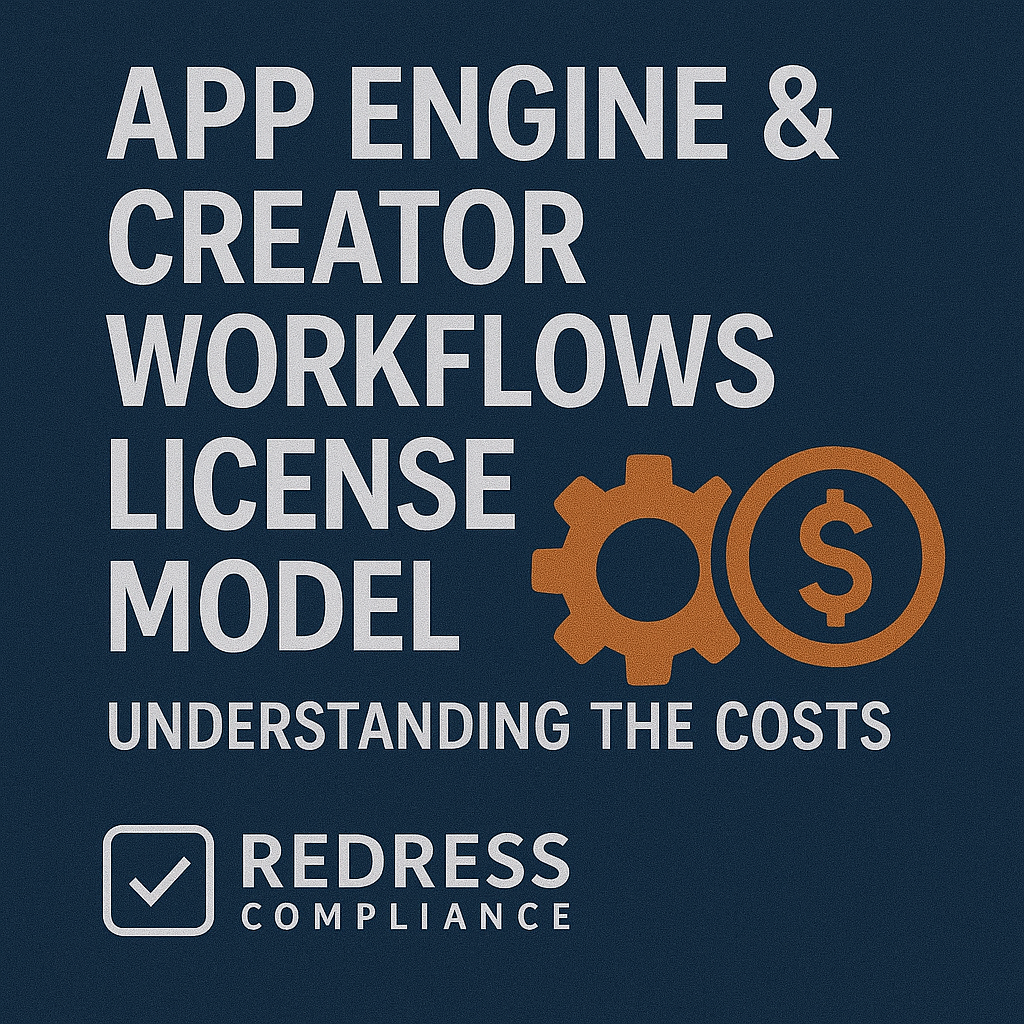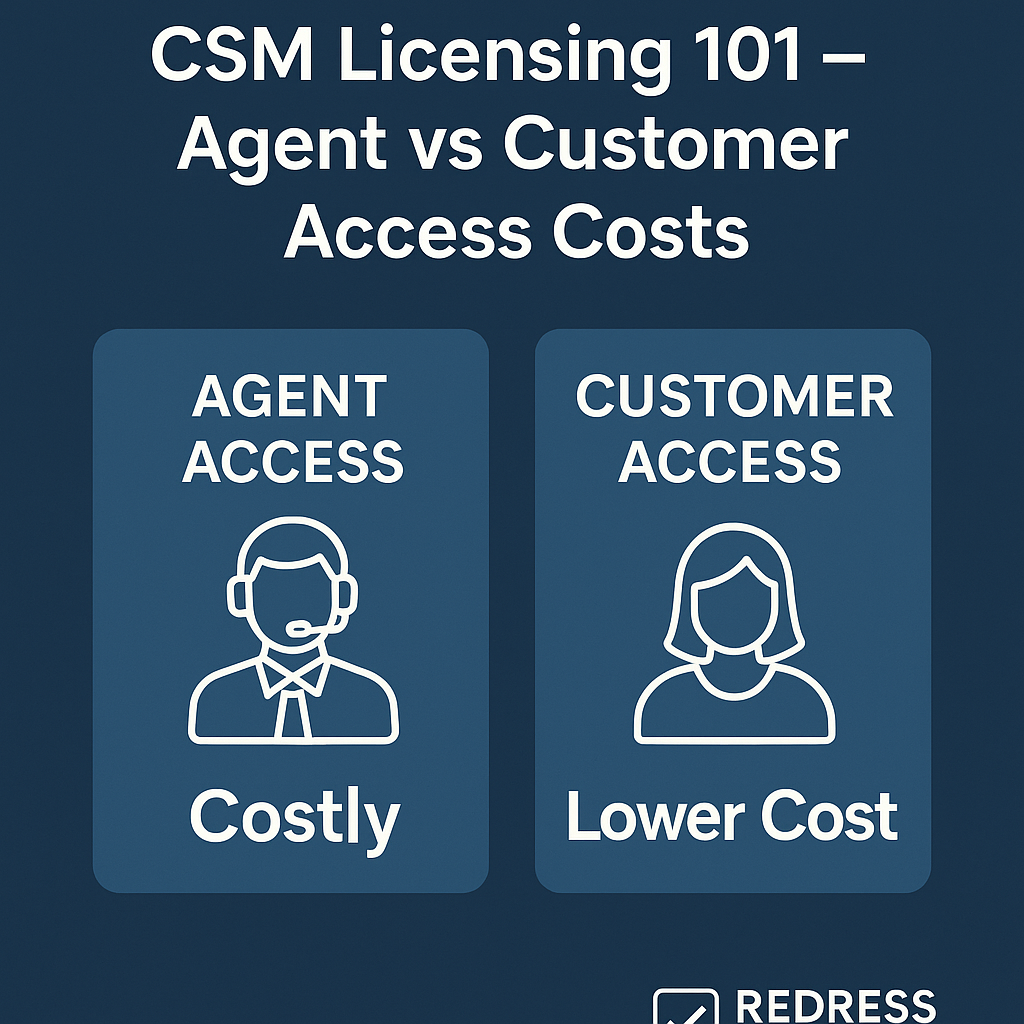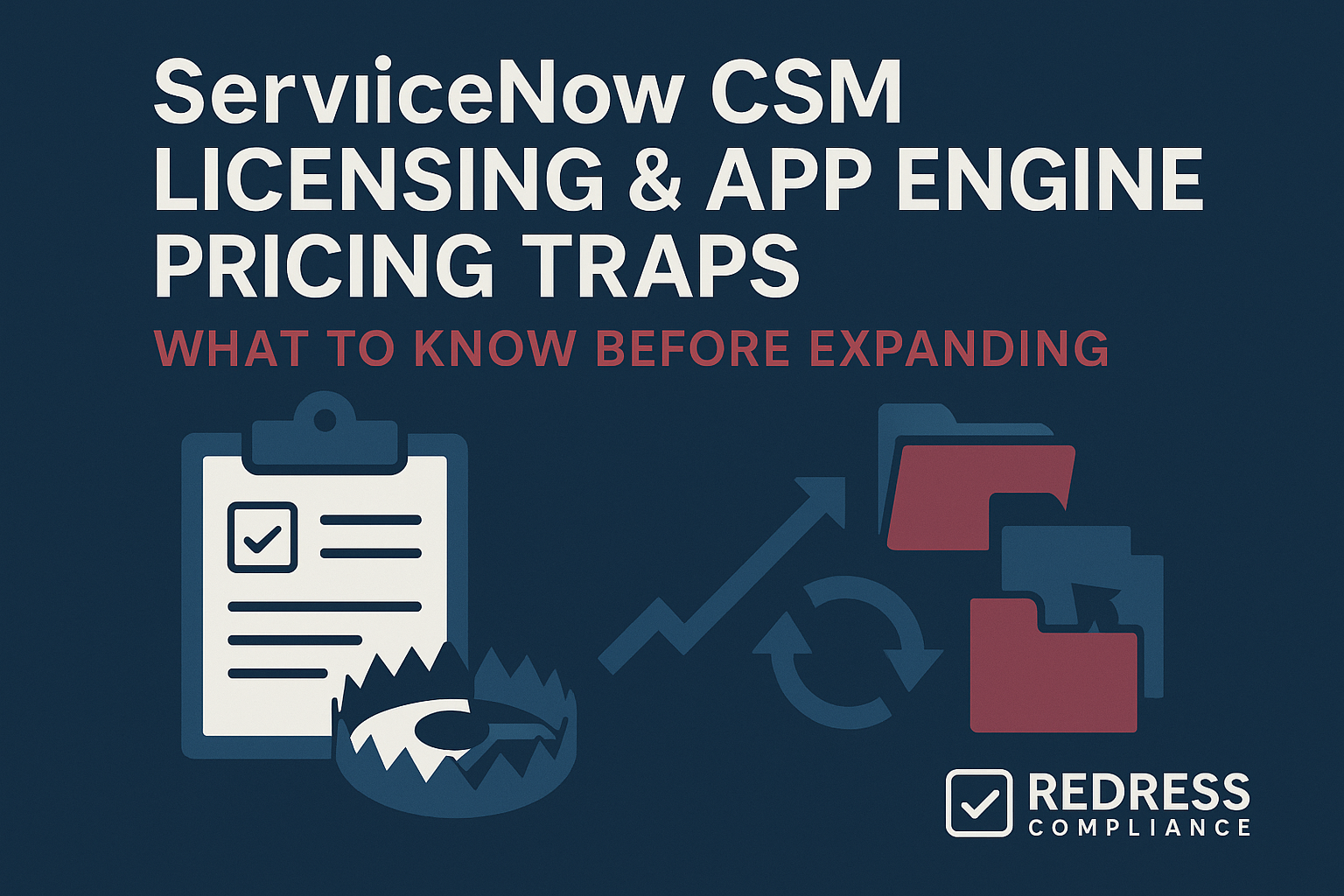ServiceNow App Engine Licensing – How Creator Workflows Drive Cost
ServiceNow’s Now Platform includes a low‑code module called App Engine for building custom apps, and Creator Workflows is the licensing model that determines how you pay for those apps.
In essence, App Engine is the technology, while Creator Workflows (App Engine licenses) are the commercial rules. Every ServiceNow customer gets some App Engine capacity for free (called App Engine Starter), but scaling beyond those limits requires purchasing additional Creator Workflows licenses (the App Engine Enterprise tier).
Read our ultimate guide to ServiceNow CSM Licensing & App Engine Pricing Traps: What to Know Before Expanding.
App Engine vs. Creator Workflows: Platform vs. SKU
App Engine refers to the platform’s custom application engine, and Creator Workflows refers to the packaged SKU that licenses that capability. This distinction matters because you might hear “build it on App Engine”, but to use custom apps in production beyond basic levels, you need to have the right Creator Workflows license.
In practice, App Engine Starter is included with your existing ServiceNow subscription (no extra cost), and App Engine Enterprise is a paid add-on (Creator Workflows licensing) when you need to go bigger.
Starter vs. Enterprise: What’s the Difference?
ServiceNow offers two main tiers for App Engine. Starter is the included tier that gives you a small allowance of custom apps to experiment with, while Enterprise is the paid tier for unlimited scale. Here’s a comparison:
| Aspect | App Engine Starter (Included) | App Engine Enterprise (Paid) |
|---|---|---|
| Cost | Included free with base platform licenses | Additional purchase (often ~20–30% of core platform spend) |
| Custom apps/tables | Limited number of custom tables/apps (small allowance per org or per product licensed) | Unlimited custom tables and applications |
| Feature access | Basic app-building tools (classic app studio, form/UI builders, flows) | All Starter features + advanced tools (App Engine Studio, Management Center, AI components) |
| User licensing | Uses existing licensed users (no separate license for fulfillers if within free allotment) | Requires App Engine license per fulfiller user (or equivalent enterprise bundle for unlimited users) |
| Suitable for | Pilot apps, minor workflow extensions, departmental solutions | Enterprise-wide app development, high app volume, mission-critical custom workflows |
In short, Starter is for small-scale use – think a handful of apps to extend what you already have – whereas Enterprise is for broad low-code adoption across the company.
For example, an ITSM customer might get 2–5 custom tables included to build modest apps at no cost. If they want to roll out dozens of apps for multiple teams, they would invest in App Engine Enterprise to remove those limits and gain extra capabilities like no-code App Engine Studio.
Who Needs an App Engine License?
A key aspect of Creator Workflows is understanding which users require a license. Generally, any user acting as a fulfiller on a custom application (meaning they can view or update records that they themselves did not create) needs an App Engine license. These are often called “App Engine Fulfiller” users – essentially your makers and doers on custom workflows.
By contrast, users who are simply submitting requests or approvals do not need App Engine licenses. For instance:
- Requesters and approvers: End users who only submit requests or just approve/view items do not require App Engine licenses.
Many core ServiceNow products include a few App Engine Starter tables for free use by their licensed users. If you stay within that allowance, those users don’t need additional licenses. But once you go beyond it, those users (and any new groups using the app) will require App Engine Enterprise licensing.
Key Cost Triggers and Scaling Factors
Several factors can drive up the cost of App Engine licensing as your usage grows:
- Number of Fulfiller Users: Each additional user who needs to work on custom apps (beyond any free allotment) typically requires a paid license. More fulfillers = higher cost.
- Number of Apps or Tables: Building more apps than the Starter tier allows will trigger the need to upgrade. If you use up your included custom tables, moving to unlimited (Enterprise) or buying extra capacity will increase spend.
- Advanced Features & Integrations: Using capabilities like Virtual Agent chatbots, predictive AI, or heavy third-party integrations in your custom apps may require additional licensing (e.g. Integration Hub or an Automation Engine package). These add-ons can expand your solution’s power but also add cost.
Being aware of these triggers upfront helps in planning and budgeting so you’re not caught off guard as your low-code efforts gain momentum.
Mini-Scenarios: How Costs Can Escalate
Even with the best planning, it’s easy to underestimate how quickly usage can expand. Here are three scenarios illustrating App Engine cost surprises:
- Pilot to Proliferation: A team builds one free Starter app; success leads to five more apps in other departments, exceeding the free allotment, and at renewal, they must purchase App Engine Enterprise (adding roughly 25% to their ServiceNow spend).
- User Growth Outpaces Licenses: An internal app launches with 10 licensed users but grows to 60; an audit finds 50 unlicensed users, resulting in a steep true-up bill.
- Feature Creep Triggers Add-Ons: Adding a chatbot and integration to a Starter app forces an upgrade to App Engine Enterprise and the purchase of an Integration Hub license, increasing the project’s cost.
These scenarios underscore the importance of monitoring usage and anticipating growth. A free experiment can turn into a significant expense if it expands unchecked.
Read how to negotiate, Negotiating CSM and App Engine Deals – Protecting Against Scale Penalties.
Common Licensing Pitfalls to Avoid
When managing App Engine licenses, watch out for these common pitfalls:
- Assuming One License Covers All: Don’t assume an ITSM or other license automatically covers custom apps. Using custom tables outside of what’s included requires its own entitlement – a mistake here can lead to compliance issues.
- Untracked Expansion: ServiceNow doesn’t enforce those limits in real time, so you must track usage or you’ll get a surprise true-up bill.
- Role Creep: Be careful giving out roles. Granting someone a fulfiller role on a custom app effectively assigns them a license (whether you purchased it or not).
- Missing Bundle Opportunities: If you need more capacity, check for bundle options. For instance, upgrading to a product version “with App Engine” or buying an Automation Engine bundle might be more cost-effective than piecemeal licenses. Not exploring these can mean overspending.
Strategies to Optimize License Costs
To get the most value and avoid overpaying for Creator Workflows, consider these strategies:
- Active License Management: Regularly reclaim licenses from inactive users so you’re only paying for people actively using the apps.
- Negotiate Tiered Pricing: As usage grows, push for volume discounts. Lock in better per-user rates for larger license counts rather than paying a flat rate for every user.
- Bundle Purchases: If you’re also investing in other ServiceNow modules, ask about bundle pricing that includes App Engine. Combining deals can yield better overall discounts.
- Phased Adoption: Start with the free Starter tier to prove the concept, then scale up in planned stages. Negotiate terms to add licenses in phases (e.g. add more users next year at an agreed rate) so costs grow only as fast as value is realized.
Pro Tips for Managing App Engine Licensing
- Pro Tip: Use ServiceNow’s built-in Subscription Management tools to monitor your custom table usage and remaining capacity. Check this dashboard monthly.
- Pro Tip: Implement a governance step for granting roles or building new apps. Have someone check if a new app or role will require an additional license before it’s deployed.
- Pro Tip: Regularly audit App Engine user activity. If certain licensed users haven’t used the platform in months, consider removing their fulfiller access to free up a license for someone else.
- Pro Tip: Design apps with license economy in mind. Leverage portals and self-service for the majority of users (no license needed), and limit the number of people who need back-end fulfiller roles.
- Pro Tip: Plan for integration and automation usage. If your custom app will make a lot of outbound calls or use AI features, budget for the appropriate Integration Hub or Automation Engine entitlements from the start to avoid surprises.
5 Insightful Next Steps for Buyers
- Audit current usage: Inventory your custom apps/tables and the users working on them. See how much of the free Starter capacity you’ve used and where you stand vs. entitlements.
- Forecast future needs: Estimate the apps and user counts you anticipate over the next 1–2 years. Use this roadmap to plan license requirements.
- Consult your ServiceNow rep: Share your usage audit and growth plan with your account team. Get clarity on current entitlements and solicit pricing options for scaling up so there are no surprises later.
- Establish governance: Set internal guidelines (approval processes, periodic usage reviews) for new apps and role assignments so licensing is always considered before deployment.
- Negotiate with data: Use your usage data and projected ROI to negotiate terms that align costs with value (e.g. bulk discounts or flexible expansion terms). Aim to have licensing scale in step with the business impact of your App Engine apps.
Read about our ServiceNow Advisory Services.


